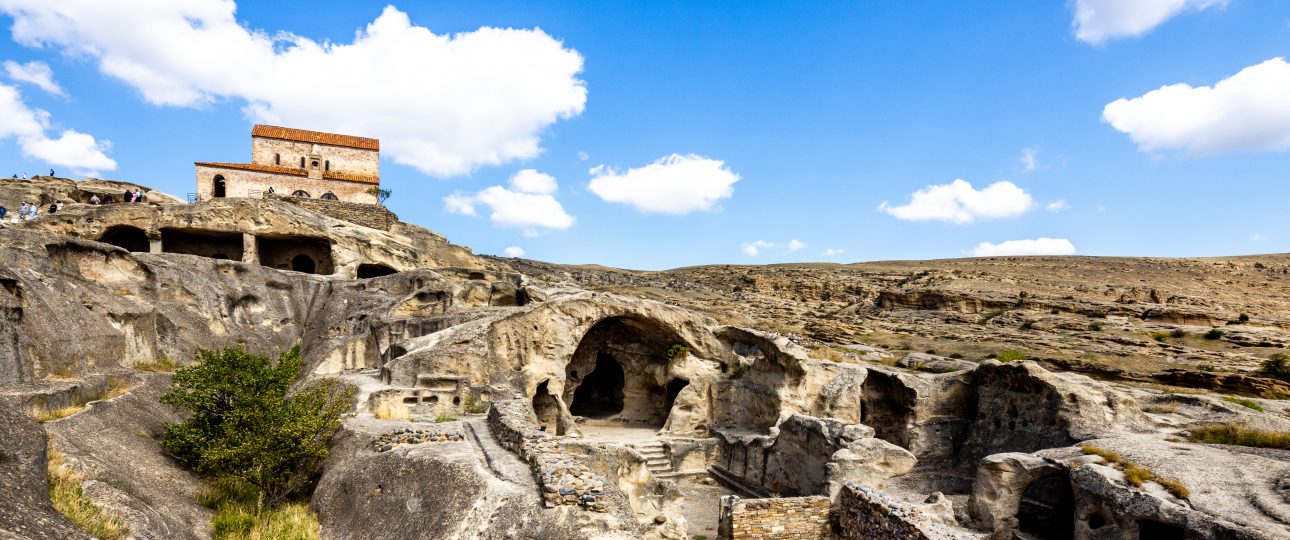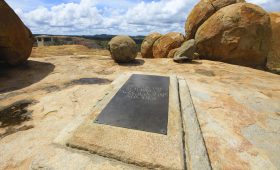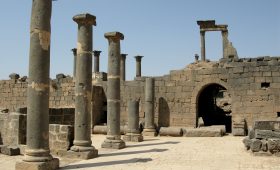“`html
Introduction to Uplistsikhe
In the heart of Georgia lies Uplistsikhe, an extraordinary ancient rock-hewn town that offers a captivating journey through time. This archaeological marvel, with its breathtaking landscapes and profound historical significance, stands as a testament to human resilience and creativity. Uplistsikhe is not just a site of historical interest; it is a vivid illustration of the seamless blend between nature and human ingenuity.
Historical Significance
Uplistsikhe is recognized as one of the oldest urban settlements in Georgia, with its origins tracing back to the end of the 2nd millennium BC. Strategically located in the ancient kingdom of Kartli, it emerged as a major political and religious center. The town’s name, meaning “the Lord’s fortress,” reflects its historical importance. Although its prominence waned with the rise of Christian centers like Mtskheta and Tbilisi in the 4th century, Uplistsikhe reemerged as a stronghold during the Muslim conquest in the 8th-10th centuries. However, the Mongol invasions in the 14th century led to its decline, leaving it mostly abandoned.
Architectural Marvels
The architecture of Uplistsikhe is a remarkable display of rock-cut craftsmanship. The town is carved into a flat mountain, with structures that include:
- Residential quarters
- Religious temples
- Storage rooms
- Entertainment spaces
- An ancient theater
The complex is divided into three parts: the south (lower), middle (central), and north (upper), covering approximately 8 hectares. The middle section is the largest, containing most of the rock-cut structures, and is connected to the southern part by a narrow pass and tunnel. Notable features include a ceremonial hall with a Roman-type arch and a 9th-10th century Christian basilica at the summit.
What Makes Uplistsikhe Unique?
Uplistsikhe’s uniqueness lies in several aspects:
- Rock-Cut Architecture: The town’s structures are intricately carved into the rock, showcasing exceptional craftsmanship.
- Historical Layers: The site reflects a blend of architectural styles from different periods, including pagan and Christian influences.
- Natural Beauty: The surrounding landscapes, including the Kura River and picturesque hills, enhance its allure.
- Cultural Significance: Uplistsikhe symbolizes Georgian resilience and creativity, representing a fusion of ancient and modern culture.
Best Time to Visit
The ideal times to visit Uplistsikhe are during the spring (April to June) and fall (September to October) months. During these periods, the weather is mild and pleasant, perfect for exploring the expansive grounds. Summer can be quite hot, while winter temperatures can be chilly, making outdoor activities less comfortable.
How to Get There
Reaching Uplistsikhe is straightforward:
- By Car: Drive from Tbilisi, approximately 100 kilometers away, with a journey time of around 1.5 to 2 hours, depending on traffic.
- By Bus: Regular public buses run from Tbilisi to Gori, the nearest city to Uplistsikhe. From Gori, take a taxi or local minibus to the site.
- By Guided Tour: Many travel agencies in Tbilisi offer guided tours to Uplistsikhe, providing a convenient and informative visit.
Local Transportation
Once in Gori, local transportation options include:
- Taxis: Taxis are readily available and offer a quick way to reach Uplistsikhe.
- Minibuses: Local minibuses are frequent and budget-friendly.
- Walking: For the adventurous, walking from Gori to Uplistsikhe allows you to enjoy the beautiful scenery.
Exploring Uplistsikhe
Prepare for a bit of hiking as you explore Uplistsikhe, spread over a rocky hill. Key areas to explore include:
1. The Main Street
Wander through the main street lined with rock-cut buildings, where you can see:
- Ancient homes
- Storage facilities
- Wells and communal areas
2. The Fortress
The fortress area offers spectacular views of the surrounding landscape, perfect for photography and appreciating Uplistsikhe’s strategic position.
3. The Church
Visit the ancient church, showcasing early Christian architecture. The frescoes are remnants of its historical significance and worth a closer look.
4. The Theater
This ancient theater is a unique feature where you can imagine performances from centuries ago.
Practical Travel Tips
To make the most of your visit to Uplistsikhe, consider these practical tips:
- Wear Comfortable Shoes: The terrain is rocky and uneven, so sturdy footwear is essential.
- Bring Water: Stay hydrated, especially during warmer months.
- Plan Your Visit: Allocate at least 2-3 hours for exploration to fully appreciate the site.
- Guided Tours: Consider hiring a local guide for deeper insights into the site’s history and significance.
Nearby Attractions
While Uplistsikhe is a treasure, the surrounding area offers more to explore:
- Gori: Visit the city of Gori, home to the Stalin Museum and a medieval fortress.
- David Gareja Monastery: A stunning rock-cut monastery about 70 kilometers away, offering beautiful landscapes and historical insights.
- Mtatsminda Park: Located in Tbilisi, this park offers panoramic views of the city and is a great spot for relaxation.
Summary of Key Facts
- Uplistsikhe is an ancient rock-hewn town with origins dating back to the end of the 2nd millennium BC.
- It showcases incredible rock-cut architecture and a blend of various historical periods.
- The best times to visit are spring and fall for pleasant weather.
- Access is easy via car, bus, or guided tours from Tbilisi.
- Local transportation options include taxis and minibuses in Gori.
- Key areas to explore include the main street, fortress, church, and theater.
- Practical tips include wearing comfortable shoes and staying hydrated.
- Nearby attractions include Gori, David Gareja Monastery, and Mtatsminda Park.
“`




